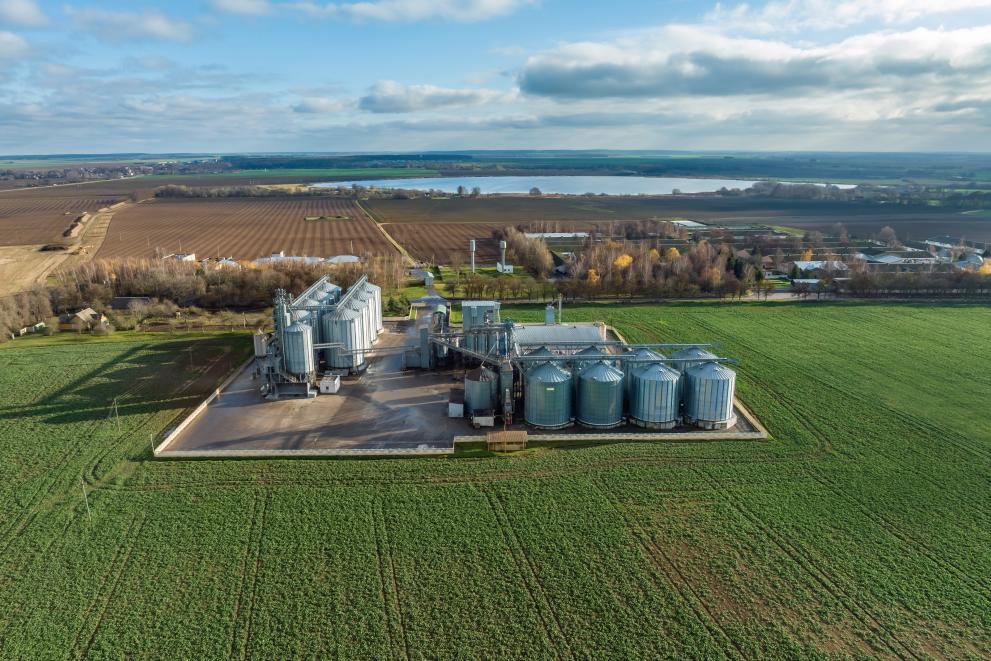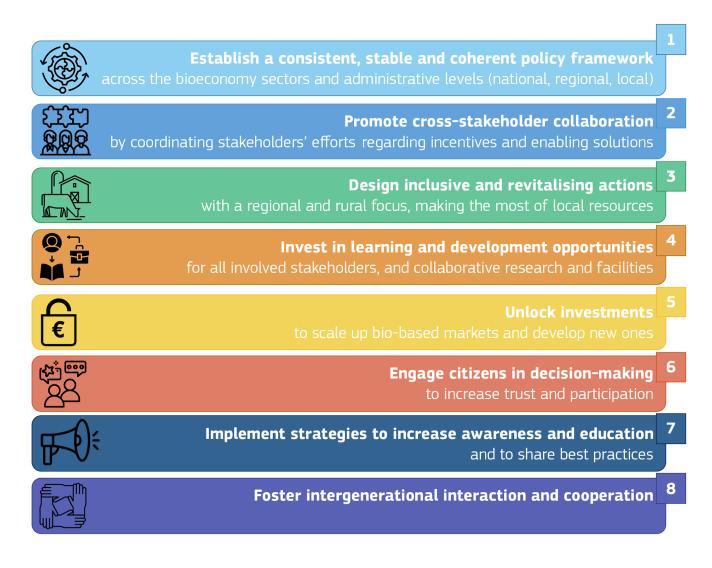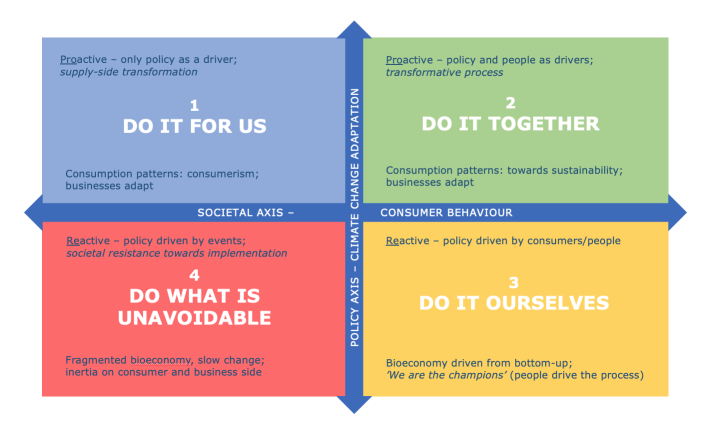
Collaboration among bioeconomy actors is a key instrument for achieving the vision of a sustainable bioeconomy in 2050, according to a foresight exercise involving 100 experts from various fields.
The exercise focused on developing forward-looking and strategic thinking about the EU bioeconomy based on four alternative future scenarios. The participants of the exercise were involved in a scientific role-playing game, during which they had to act and react to others' steps in future bioeconomy scenarios.
The results are summarised in a new JRC report Exploring foresight scenarios for the EU bioeconomy, and could contribute to the update of the EU bioeconomy strategy, to be developed during 2024. Recommendations put forward in the report include the need to establish coherent policies, support regional and rural development, invest in education and awareness raising, promote sustainable lifestyles, and engage consumers in the decision-making process.
The bioeconomy in the EU
The bioeconomy includes all economic and industrial sectors that rely on renewable biological resources from land and sea, such as crops, forests, fish, animals, and micro-organisms to produce food, materials, energy, and services.
It makes up an important part of the EU economy, generating 4.9% of the gross domestic product (GDP) and employing 8.3% of the workforce in the EU-27, according to 2020 data. The 2018 EU Bioeconomy Strategy aims to develop a circular, sustainable bioeconomy for Europe, strengthening the connection between economy, society, and environment.
If deployed in a sustainable manner, the bioeconomy has the potential to contribute to many of the European Green Deal objectives, e.g. by reducing dependence on fossil resources, delivering on Europe’s economic prosperity, ensuring a fair and just transition, and enhancing the protection of the environment and ecosystems.
The Knowledge Centre for Bioeconomy (KCB) plays a key role in the implementation of the EU bioeconomy policy: it supports a better understanding and monitoring of the effects and impacts of the bioeconomy with regard to the ecological boundaries, as acknowledged by the recent Council Conclusions.
These call for an updated bioeconomy strategy and provide recommendations to further integrate the bioeconomy into all policies ensuring policy coherence, and facilitate knowledge transfer towards rural areas.
A serious game for the foresight method
Strategic foresight looks into possible future developments that could shape the world and the Commission promotes it as essential tool to embed future-oriented thinking in policymaking.
In 2019 the KCB initiated a foresight exercise to analyse how the EU bioeconomy could evolve by 2050, involving a network of experts to develop four different bioeconomy foresight scenarios, towards sustainable development and climate neutral economy.
In 2022-2023, around 100 stakeholders from 17 countries have been invited to participate in foresight workshops to explore these scenarios, develop forward-looking and strategic reflections about the various aspects of the bioeconomy and contribute to the narrative regarding future enablers for a sustainable bioeconomy.
The KCB, in collaboration with the Commission’s Directorate-General for Research and Innovation, developed a bioeconomy edition of a serious gaming and foresight tool, designed by the European Commission Competence Centre on Foresight.
The use of this serious game, called the Scenario Exploration System (SES), enables the involvement of large groups of experts and non-experts in collaborative and participatory foresight, giving them the opportunity to adopt the roles of different stakeholders, who have to pursue their long-term objectives within predefined future scenarios.
During the game sessions, each of the participants played a specific role (primary producer, policy maker, business representative, consumer's association, public voice) and took action in response to scenario events in specific time horizons.
Related content
Details
- Publication date
- 15 January 2024
- Author
- Joint Research Centre
- JRC portfolios






